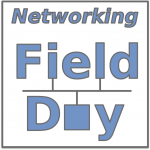0

I’ve just got back from Networking Field Day 9 (NFD9) and my head is buzzing after a busy week of presentations. I posted a preview of NFD9 so it seems only fair to give a quick wrap up of the week’s themes and presentations as I saw it.
My NFD9
After some time spent thinking on the flights back home, I came to the conclusion that there were two themes that were recurring this week.
The dominating theme for me was, at last, seeing the magic rainbow-expelling problem-solving unicorn that is Software Defined Networking – SDN – and all its inherent paradigm-shifting magic, turned into products that actually seem real, and are starting to deal with some of the issues that were flagged up when SDN was first being described. It’s relatively easy to SDN-wash a product, but making it something from which a user can actually benefit, well, that’s something else.
The second theme was that many of the products looked to the concept of detecting or fixing problems before the users were aware of them, whether as an alert from a monitoring system, or a network that automatically self-heals or otherwise avoids problem areas.
SDN == Programming
Don’t Continue reading


